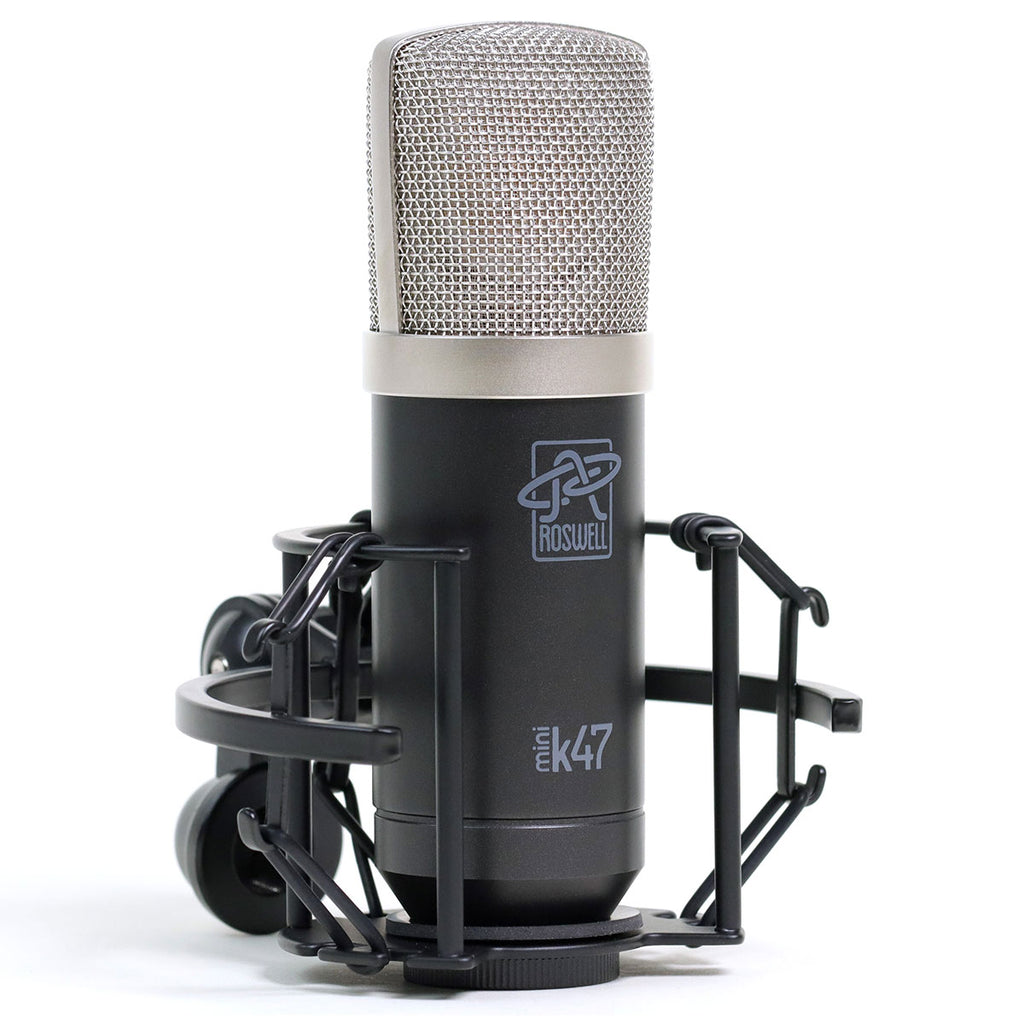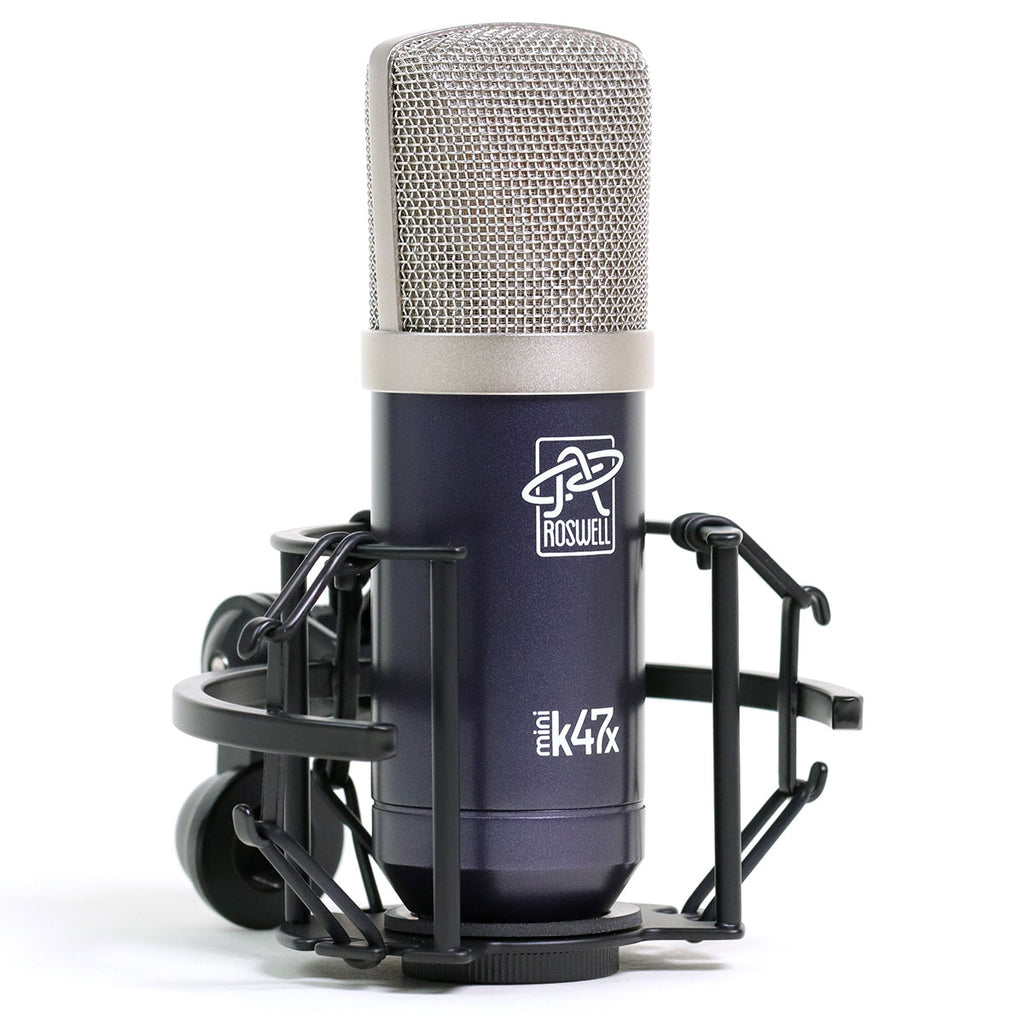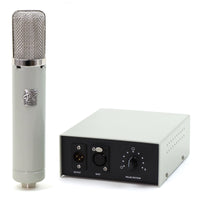Sonic Diversity
A Thought Experiment
On the day that you finish your Recording Arts degree, a wealthy uncle offers to support your new career. He offers to buy you either:
- three identical ultra-premium condenser mics worth $30,000, or
- a 15-piece mic collection including a variety of dynamics, ribbons, pencil mics, and a bunch of large condensers with different sonic profiles. They're good mics from reputable brands, all together worth $5000.
The only catch is that if you take the three expensive mics in hopes of selling two of them to finance the purchase of something else, your uncle will make you record and mix his next three albums of original washboard compositions, using only a lav mic and an iPhone.
So you consider the options. Those three premium condenser mics would probably be great on vocals. Well, one of them would be, on at least some vocals. Could you use the other two on high-gain guitar cab? kick and snare? brass instruments? Maybe, maybe not.
The point of the thought experiment is that all the different sounding sources that might wander into your studio will very likely benefit from different-sounding microphones. Said another way, you won't have many great recording sessions if all of your microphones sound the same.
What is Sonic Diversity?
A well-rounded mic locker embraces the idea that varied sources need varied microphones. Whether you're recording a singer/songwriter, rock band, audiobook narration, or an orchestra, you need the right tools for each of those sources.
Honestly, even if all you ever record is vocals, you'd still need a couple different-sounding microphones, because every voice is different.
Having the right mic for any source is the core idea. Sonic Diversity means you've built versatility into your mic locker, enabling you to artfully record every source in the room.
Roswell Pro Audio meets that need by providing a series of affordable, distinctly voiced microphones, each designed to capture a specific sound. We have borrowed from the last 70 years' worth of capsule and circuit development, and a decade's worth of our own R&D, to design problem-solving tools that cover a huge range of sonic colors and textures. Read more about those, below.
If you'd like to learn more about microphones, and about Sonic Diversity, see Roswell founder Matthew McGlynn's presentation at the Univ. of Michigan's Audio Symposium:
Boutique Performance on a Budget
Our "Mini K" product line is unique in the industry. All the design, assembly, testing, and tuning happens in California. The audio circuits employ a combination of vintage and modern through-hole components selected for their contribution to the final sound of the mic. Capsules are tuned and tested to meet strict specifications. Roswell microphones are built in small batches, not imported by the pallet-load from foreign countries.
The microphones are small, easy to position, and "point and shoot" simple to operate.
Each Mini K microphone is bundled with our proprietary Cutaway shockmount, which holds the mic securely via threaded interface, isolates the mic from stand vibrations, and thanks to its open front cage, allows positioning close to a source.
 The Mini K47 uses our "K47" capsule. The transformerless circuit provides clean transient response, high sensitivity, and very low noise. The capsule voicing adds color and midrange presence to the source. This model is a favorite on vocals, guitar cabs, piano, and drum overheads.
The Mini K47 uses our "K47" capsule. The transformerless circuit provides clean transient response, high sensitivity, and very low noise. The capsule voicing adds color and midrange presence to the source. This model is a favorite on vocals, guitar cabs, piano, and drum overheads.
Legendary pianist Bill Payne of Little Feat has a pair on his piano in his home studio. The band uses Mini K47s on overheads on their groundbreaking 2021-2022 tour, as well.
 The Mini K87 uses our specially tuned "K87" capsule and a circuit designed to be fundamentally transparent without losing all character. This is a genuine workhorse mic that has found fans for voiceover, vocals, and acoustic guitar, although its neutral tone allows it to be used on nearly any source in the studio.
The Mini K87 uses our specially tuned "K87" capsule and a circuit designed to be fundamentally transparent without losing all character. This is a genuine workhorse mic that has found fans for voiceover, vocals, and acoustic guitar, although its neutral tone allows it to be used on nearly any source in the studio.
Following a Virtual Showroom livestream, LA session bassist Mike Gurrola and jazz sax player Ralph Moore were both so impressed by the clarity and articulation of the Mini K87 that they both chose one for their home studios.
 The Mini K67x uses a proprietary capsule design, nominally a 34mm K67 type although with a tuning that is unique in the industry. We have coupled this to a single-stage JFET/transformer circuit tuned to create even-order harmonics to complement the source. This mic has become an instant best-seller because it delivers the sound of high-priced vacuum tube mics at a fraction of the cost. Customers love it on vocals and guitars, and it has already earned album and tour credits on more diverse sources such as drum room, sax, and guitar cab.
The Mini K67x uses a proprietary capsule design, nominally a 34mm K67 type although with a tuning that is unique in the industry. We have coupled this to a single-stage JFET/transformer circuit tuned to create even-order harmonics to complement the source. This mic has become an instant best-seller because it delivers the sound of high-priced vacuum tube mics at a fraction of the cost. Customers love it on vocals and guitars, and it has already earned album and tour credits on more diverse sources such as drum room, sax, and guitar cab.
One of the first Mini K67x we made ended up winning a vocal shootout for the upcoming Triumph tribute record -- against several mics that cost 3-4 times more -- and went on to be used on sessions for the upcoming Tenacious D record, and the Super Mario Bros movie.
 The Mini K47x is sort of a hybrid of the Mini K47 and Mini K67x. We crafted a new K47 capsule to provide a slightly less colored upper mid response, and a new transformer to optimize the mic's voicing. Customers have loved this mic on voices, piano, guitar, and drum overheads.
The Mini K47x is sort of a hybrid of the Mini K47 and Mini K67x. We crafted a new K47 capsule to provide a slightly less colored upper mid response, and a new transformer to optimize the mic's voicing. Customers have loved this mic on voices, piano, guitar, and drum overheads.
The Mini K47 KD is a dedicated kick drum / floor tom mic, developed at the request of endorsees for close miking of high SPL sources. We designed a new circuit to minimize distortion, and reduced low-frequency filtering, to craft a mic that provides deep bass extension and upper midrange clarity. It excels at both internal and external kick placements, and is a favorite for closed (non ported) bass drums, where it captures fantastic tone without sounding click-y or artificial.
Large-Body Mics Add Features
 The Delphos II is a three-pattern microphone with switchable pad. It is a sonic sibling of the Mini K87, in that it embraces neutral tonality and accurate transient response. Customers describe this as a desert-island mic; its deep versatility finds a use on every session.
The Delphos II is a three-pattern microphone with switchable pad. It is a sonic sibling of the Mini K87, in that it embraces neutral tonality and accurate transient response. Customers describe this as a desert-island mic; its deep versatility finds a use on every session.
The Colares is our "big vocal" microphone. The rich harmonics and open top end add texture and sheen. The mic's unique dual-purpose pad switch defeats the saturation circuit, providing a cleaner, more modern sound when desired. A three-way HPF allows sculpting of the low frequency right at the mic.
The Aztec is our first tube microphone. Based on the ElaM 251, the Aztec captures the clarity and tone of the finest surviving mics of the 1960s, without high-frequency hype or harshness. It provides 9 polar patterns, pad, and high-pass filter.


